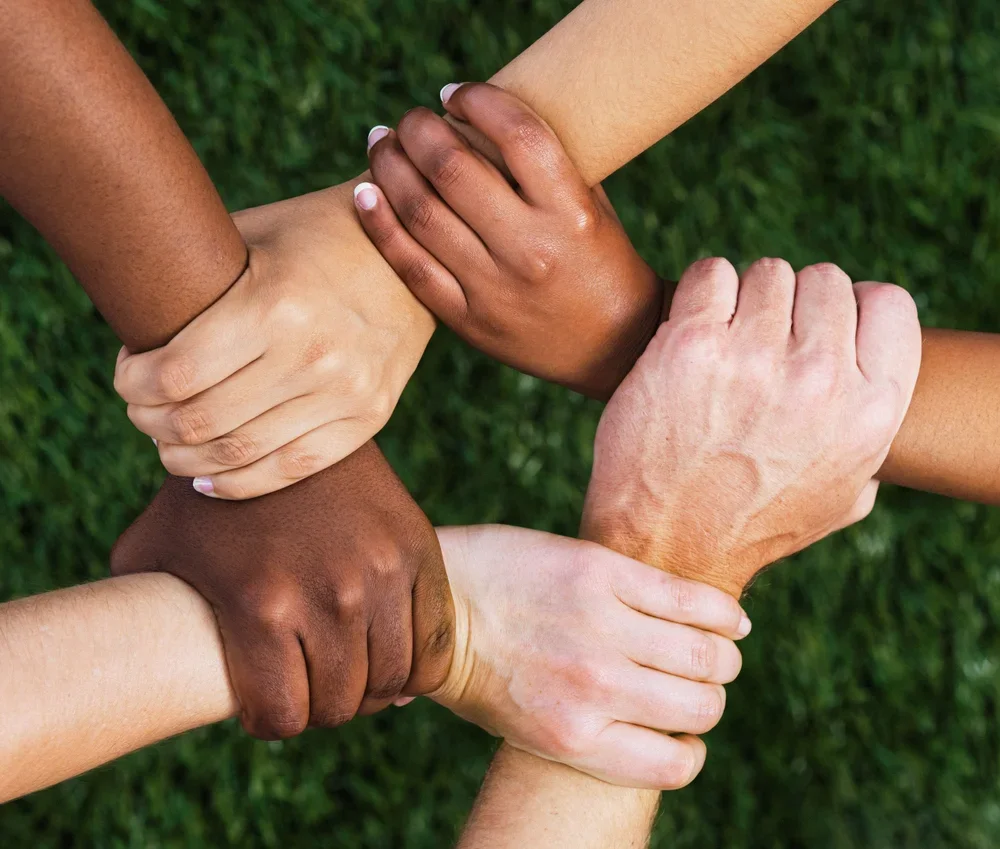Sex-Love Continuum: How we explore non-monogamy
Preface. This blog post is rooted in a graph that I’ve developed to help people connect to and put language to their desires around non-monogamy and polyamory. On the illustrative graph below are labels for how I understand that humans might identify based on their openness to love and sex with more than one partner. These ‘sample labels’ come from my experience of counseling many couples and polycules in the Boulder / Denver area and are likely different across regions. Ironically, as a Narrative therapist, much of my work is to untangle labels gently; thus, I acknowledge the rub of me offering labels to you, the reader, and I invite you to hold them gently, accept that our understanding our ourselves and desires grows with time and experience, only adopt a label if it feels congruent to you, and be open to create your own language with your loved ones for how you desire to navigate the world of sex and love. The essence of this Sex-Love Continuum is that there is a distinction between our capacity to love more than one person romantically and to be sexually or erotically intimate with more than one partner.
We could argue whether the relational construct of monogamy is black and white, and some couples might navigate whether texting former partners or having drinks with a co-worker is in integrity with their relationship’s values, but polyamory is certainly less binary. Estimates of what percent of Americans have practiced consensual non-monogamy or polyamory average just above 20%, as illustrated by Haupert et al., and this estimate is likely low given our culture’s squeamishness around the issue. Moreover, over 40% of people list some type of open relationship as their top fantasy per Lehmiller. For these sexually-curious friends and neighbors, there are almost infinite ways to practice consensual non-monogamy, and this adds both beauty and complexity to the experience of poly and consensual non-monogamous humans.
Non-monogamy is less puzzling when we embrace clear language for ourselves and share our experience tenderly with our partners.
Often, the foundation of my counseling work with these couples or polycules is clarifying language around their experiences. To Narrative therapists, language helps shape our view of ourselves and our relationships, both with our family of origin and chosen families.
I developed the chart below through these conversations, and, more recently, my colleague Pamela Peters, MFTC, helped name it the “Sex-Love Continuum.”
One misconception of polyamory, in particular, is that it is only about free sex. Yes, many people who identify as poly enjoy the variety of sexual partners and erotic blueprints that come with multiple partners. Still, many consensually non-monogamous people similarly enjoy the freedom to love and soulfully or sensually connect with more than just one other partner.
Knowing where we as individuals land on this two-dimensional continuum and grasping where our partners allow for deeper conversations in our couples counseling sessions about the impact of our desires and our partners’ compersion and wibbles. Unlike the X-Y axis diagrams from high school that appear like a giant plus sign as the X (horizontal) component can go further left, or the Y (vertical) component can go further right for negative values, the continuum illustration I’ve developed only goes up and to the right as I have yet to encounter people with negative desires for love or sexual intimacy.
The X-axis below is the continuum for a person’s openness to sex outside of a monogamous relationship. People who are on the left side of this axis, close to “0”, are not open to or open for limited sexual contact with others outside their ‘primary relationship.’ I recognize that using the word “primary” is problematic for many poly humans, especially those who aspire to less hierarchy; that said, I use “primary” here for clarity around people’s experiences.
As a human moves further right on this X-axis, they are more open to sex with more than one partner. So, closest to the Y-axis, you find perhaps newbies, those who might enjoy same-room soft swap where they are in the same room as their primary partner and enjoying petting or non-intercourse with others. Furthest to the right are those with perhaps hall passes or couples who participate in full swap separate room arrangements where they are open to having sex with others in a separate space from their primary partner. Again, further right on the X-axis, the more you’re open to or engaging in swinging, an open relationship, or consensual non-monogamy with likely fewer rules and more sexual freedom.
Looking at the Y-axis this is the “love axis” as I’ve designed it, and resonates mostly with humans who identify or are interested in polyamory. People near the X-axis, so low on the Y-axis, are not open to love more than one other partner and often identify as ethically non-monogamous, swingers, in an open relationship, or consensually non-monogamous — note that it’s becoming more common for people to just identify as “non-monogamous” regardless of where on the continuum they land.
The further up the Y-axis one lands, the more open they are to polyamory and loving more than one person. So, at the top of the Y-axis, still close to ’0’ on the X, are poly humans who either are not open to or not interested in sexual non-monogamy. Here are some asexual or grey-ace humans and some who believe in loving more than one but are either satisfied with one partner or have relational boundaries or rules that don’t allow them to be further right on the X-axis.
Looking at the upper-right area of the Sex-Love Continuum, you find most polyamorous people. Those who identify as poly with less or without hierarchy, solo poly people, and relational anarchists are often found up and to the right on this chart. If you will, the furthest up and to the right is likely a person who identifies as solo poly or a relational anarchist who has the sovereignty and desire to relate sexually and romantically with more than one other partner. This graph is about desire, not actions, so someone who is unpartnered but open to relational anarchy might still place themselves at the upper right.
In my work as a relationship therapist for non-monogamous and polyamorous couples, I often sketch this chart with my clients in session and have them place themselves on it. Gently co-exploring where each human is, from time to time, on this chart helps the clients visualize where they are themselves and relative to one another.
During counseling, we can also sketch on the same chart where each person desires to be eventually and what constraints they are feeling to be where they most authentically desire. Through our work together, people often gain the clarity to know themselves and then the courage to speak to where they desire to be. The other partners can then listen to understand, and a co-exploration can be had around the pros and cons of embracing a more flexible relational structure. It’s important to note that my lens as a relationship therapist is not to move people to a particular place on the chart but to connect to their experience and allow themselves the gift of being fully heard in their actual humanity. I’ve worked with many couples with notably different positions on this chart, but their relationships thrived when they gained clarity around the other's desires. I might most desire to live on a slope-side cabin in Steamboat Springs, but that doesn’t mean it’s the most harmonious place for me, given my life circumstances. Similarly, allowing people to express their authentic desires does not mean one is ‘moving to Steamboat.’ Still, it will create more trust and understanding in the relationship and what’s more romantic than that?
Learn more about polyamory-friendly therapy or contact me directly.






